John Hurrell – 10 May, 2017
This show is a selection of contemporary paintings by Noel Ivanoff that is intended to carry on the discussion about that discipline's objectness and materiality - notably various revamped issues pointed out by Glen Snow in his recently put together 'Materialised' exhibition at Two Rooms. Some of these artists are still studying and not known by the wider art-cruising public. Others were in the 'Materialised' show, but now here mostly present newer works.
Auckland
Alain Biltereyst, Stella Corkery, Johl Dwyer, Robbie Fraser, Noel Ivanoff, Monique Lacey, Rohan Hartley Mills, Leanne Morrison, Christina Pataialii, Glen Snow, Imogen Taylor
Rematerialised
Curated by Noel Ivanoff
27 April - 29 April 2017
Rematerialised is a selection of contemporary paintings by Noel Ivanoff in Demo, the Whitecliffe’s gallery in Shaddock St. It is intended to carry on the discussion about paintings’ objectness and materiality - notably various revamped issues pointed out by Glen Snow in his recently put together Materialised exhibition at Two Rooms. Some of these artists are still studying and not known by the wider art-cruising public. Others were in the Materialised show, but are now here to mostly present newer works - contributions that are anti-illusionary and which accentuate the items’ physicality in relation to the supporting wall.
With the said issue of illusionism /picture plane that this expertly selected (but irritatingly brief) exhibition references, many of these works play it both ways, optically (say via cool dark colours) absorbed into (or receding from) the wall while also, as relief objects, projecting out. It is fun to go around the whole show and contemplate the Rematerialised logic for each work.
With Rohan Hartley Mills thin white paint and sheets of white paper are used to faintly cover dark organic shapes or meandering lines painted directly on to canvas or gallery corner walls. The translucent layering locks the form to the picture plane, as do the uncovered portions peeking out at the edges.
Monique Lacey’s paintings on the other hand are painted, strengthened, flattened, cardboard ‘boxes’ where contrasting tones are visible through gaping splits and where collaged grids are detectable on the shiny outer surface. Wittily deceptive these ‘squashed’ reliefs superficially might seem to be scavenged detritus, but really are humorous and seriously enthralling constructions.
Looking at Robbie Fraser’s two paintings, one with a St. Andrew’s cross (with its diagonal struts) makes its picture plane tremulous and taut, while the other plays with orthogonal conventions where ‘parallel’ lines diverge instead of converge, the edges splaying out instead of spatially receding. The latter work’s contradictory forms hover in an illusionistic window, without the distant end perversely advancing via its hot colours, or the close end retreating with its cold ones.
Stella Corkery‘s two contributions play with internal fissures within the paint that arc and twist to reveal ‘other paintings’ obscured behind. The bumpy top edge of one dark work makes the white gallery wall appear hacked into, resulting in a vertical streaky window suspended within a melting gelatinous igloo.
Johl Dwyer has two paintings that are very different. One, with layers of translucent enamel and resin, looks from a distance to be embedded in the wall while also positioned in front of it and projecting outward. The other, of plaster and stained oil, like Fraser’s ‘Cross’, affirms the white planar architectural support.
Leanne Morrison’s two large hard edged works have a startling precision with their wide diagonal sweeps of hot orange or thin black. What is underneath the surface of these dramatic shapes acquires great interest, either directly underneath the strident geometry with its thin layers, or as little corners delicately peeking out from under dominant edges.
Imogen Taylor’s two small texturally rich works have a different mood. They intimately explore collage, and differ in that the smallest is set in a framed mount and presents the illusion of an obliquely angled mass twisting away from the viewer. The other is more frontal. Its dominant skinny narrative elements (painted cigarettes and matches on a tablecloth) are also at unusual angles but trapped under patterned planes, and choreographed in parallel via unanticipated vectors.
Christina Pataialii’s two casually pinned-up canvas diptychs focus on raw brusherly or wispily sprayed linear marks, and subtle masking. The contrasting meandering black elements spatially interlock effectively, and suggest partially completed words that (using colour) possibly refer angrily to epidermis. Fierce community politics and aesthetic construction are here vigorously combined.
The organiser of this show, Noel Ivanoff has two paintings. One (in two parts) stresses portability where the components rest on the floor by the wall, and protective plywood and meticulous textural paint application are inseparable. The other emphasises a unified field of cascading vertical marks where a dark rectangle of blurred streaks optically hovers behind the wall’s white plane.
In comparison, Glen Snow‘s paintings (more of which are currently on show at Antoinette Godkin) emphasise paint as an adhering substance that literally holds hardboard ‘scraps’ together. The energetically jostling shapes, by celebrating fragmentation, help thwart any sense of recession into the contextualising architecture. As composite organic items they accentuate their properties as relief sculptures (doubling as paintings) that tease out nuances of squishy, oozy (very solid) usually-receding colour.
John Hurrell
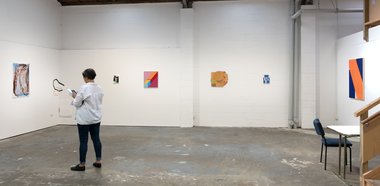
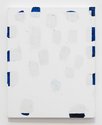

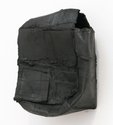

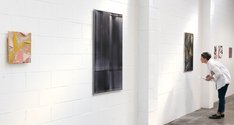

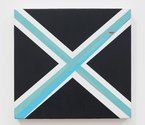


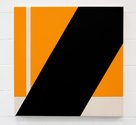

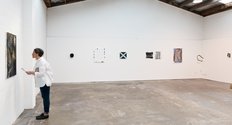
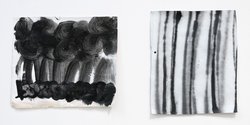
 Two Rooms presents a program of residencies and projects
Two Rooms presents a program of residencies and projects Advertising in this column
Advertising in this column



This Discussion has 0 comments.
Comment
Participate
Register to Participate.
Sign in
Sign in to an existing account.